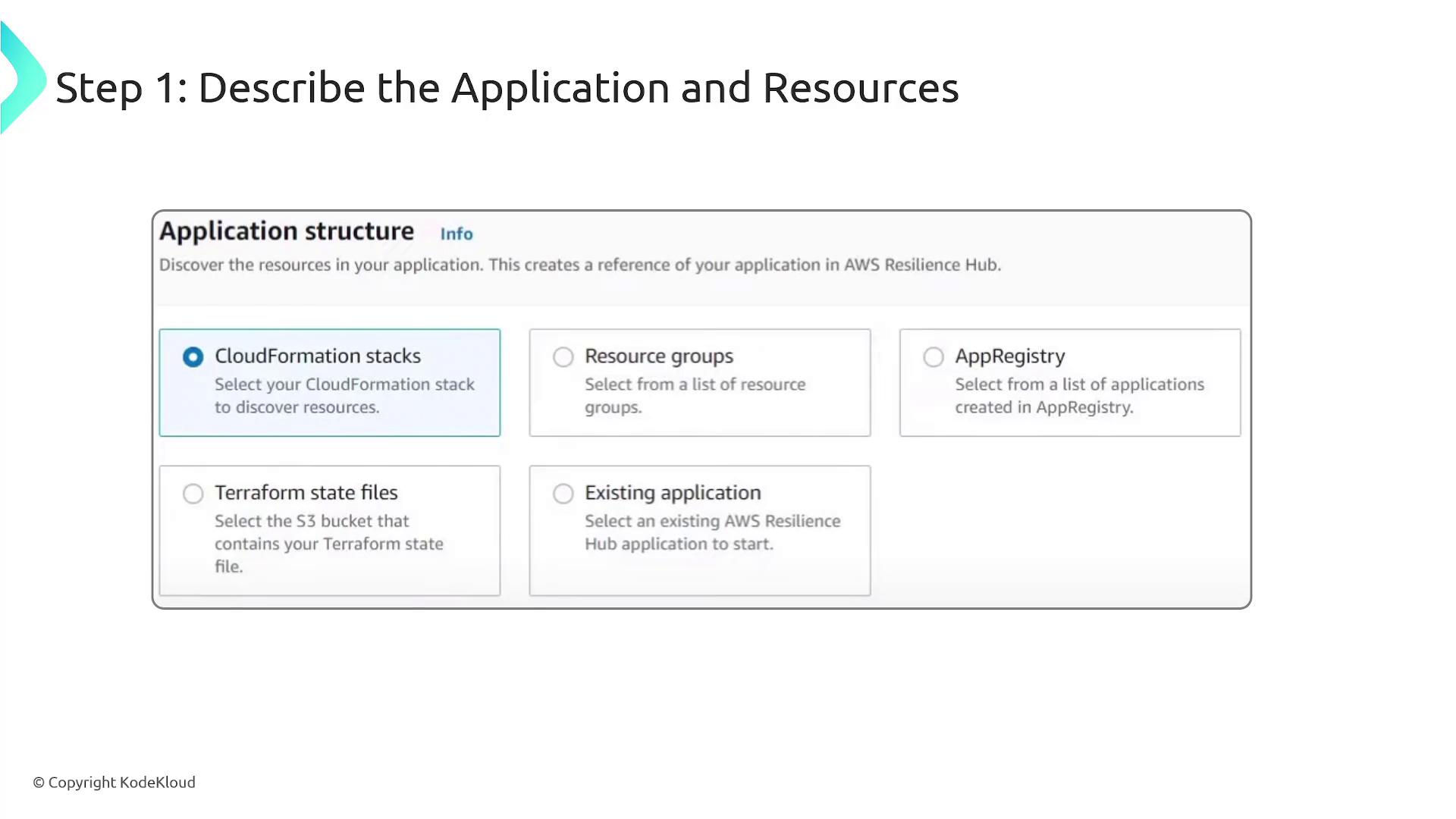AWS Solutions Architect Associate Certification
Services Management and Governance
Resilience Hub
In this lesson, we explore the AWS Resilience Hub—a robust solution designed for managing disaster recovery in AWS cloud environments. Disasters, whether natural (such as earthquakes), technical (system failures), or human-induced (including DDoS attacks), can disrupt operations, compromise data integrity, and impede business continuity.
When a disaster occurs, data security, application availability, and overall business operations can be severely impacted. To address these challenges, AWS recommends following the Well-Architected Framework. This framework promotes strategies like:
- Reliable backup mechanisms
- Multi-regional deployments for critical components
- Robust security measures
- An effective disaster recovery plan
These strategies are aimed at minimizing disruptions by ensuring rapid restoration of systems, applications, and data.
Overview of AWS Resilience Hub
AWS Resilience Hub simplifies and automates your disaster recovery process in the AWS cloud. It offers a centralized console from which you can manage resilient activities such as backup scheduling and setting recovery objectives—including Recovery Point Objective (RPO) and Recovery Time Objective (RTO).

For clarity:
- RPO (Recovery Point Objective): The maximum tolerable timeframe in which data might be lost due to an incident.
- RTO (Recovery Time Objective): The targeted period within which systems and business processes must be restored to prevent unacceptable consequences.
After deployment, Resilience Hub continuously monitors your application's resiliency posture. In the event of an outage, it offers detailed insights and swiftly initiates recovery procedures. Acting as a centralized overseer, it monitors services across your application, ensuring efficient failover when required.
When a disruption occurs, Resilience Hub identifies the root cause, alerts operators, and facilitates execution of standard recovery procedures.
![]()
Configuring and Assessing Resilience
Configuring Resilience Hub begins by specifying which resources to protect. There are several methods to define these resources:
- Use the CloudFormation stack that created your resources
- Utilize a resource group
- If managing with Terraform, reference the Terraform state file

After defining your resources, Resilience Hub analyzes them to identify potential weaknesses. You then set your application’s resilience objectives by attaching a resilience policy that outlines specific RTO and RPO targets for various disruption scenarios. With the application and policy in place, initiate a resiliency assessment. This assessment cross-checks your configuration against the defined resiliency policy and generates a report detailing where adjustments might be necessary.
![]()
Based on the assessment report, you receive targeted recommendations to bolster your application's resilience. These recommendations may advise configuration changes, setting up alarms, implementing regular testing, or revising your recovery standard operating procedures (SOPs). Following updates to your application and policy, you can re-run the assessment. This iterative process continues until the desired resilience targets are met.
Testing and Evaluating Resilience
Once your resilience configuration is up-to-date, it's important to conduct tests that mimic real-world outages. This testing evaluates whether your AWS resources and applications restore within your target RTO and meet your RPO expectations. These simulated tests are critical for understanding and enhancing the overall resiliency and recovery speed of your systems.
Note
Regular testing of your disaster recovery plan ensures that your infrastructure remains resilient and compliant with business continuity requirements.
Key Features and Benefits of AWS Resilience Hub
The benefits of integrating AWS Resilience Hub into your disaster recovery strategy include:
Centralized Resiliency Planning:
Manage and monitor your recovery plans across multiple AWS services and accounts from a single interface.Automated Backup and Recovery:
Streamline critical data backup and facilitate rapid restoration in the event of a disaster, thereby minimizing downtime and data loss.Compliance Adherence:
Implement disaster recovery processes that meet legal and regulatory standards.Continuous Monitoring:
Obtain real-time insights and alerts on potential issues, enabling proactive measures to prevent disruptions.
| Benefit Category | Description | Example Tools/Features |
|---|---|---|
| Centralized Management | Unified console for monitoring resiliency across AWS services | AWS Resilience Hub Dashboard |
| Automated Backup & Recovery | Automation of backup processes and rapid recovery during outages | Scheduled backups, automated failover mechanisms |
| Compliance | Adherence to regulatory standards and best practices | Recovery policies aligned with legal requirements |
| Continuous Monitoring | Proactive insights and alerting for early detection of potential issues | Real-time tracking, automated alerts |
AWS Resilience Hub provides a comprehensive ecosystem to ensure your AWS infrastructure is well-prepared to withstand, recover from, and ultimately prevent the adverse effects of disasters.
For further reading on AWS disaster recovery strategies, consider reviewing the AWS Well-Architected Framework and related resources in the AWS Documentation.
Watch Video
Watch video content